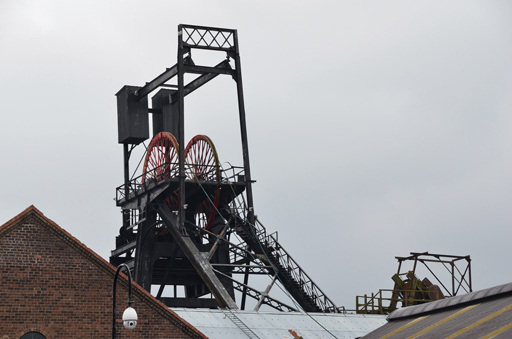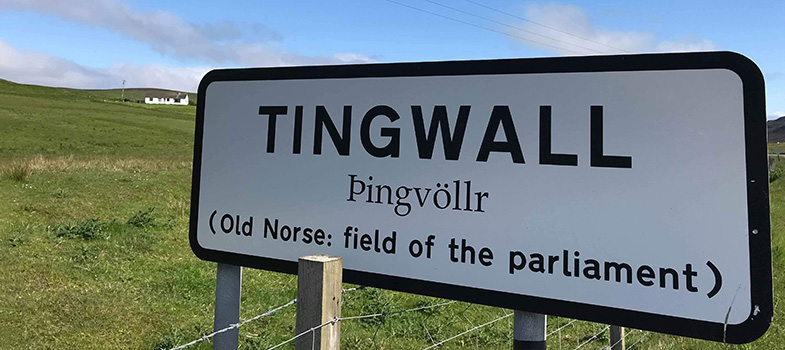10.5 Mining in Scotland
From the fashionable road that Scottish food has taken, and the admirable traditional trades of the Northern Isles, we now go deep into the darkness of Scotland’s mining industry where we find another once common occupation which was synonymous with the Scots language and associated vocabulary. Even the term for entering a mine, and the name given to the entrance, is a Scots one: the in-gaun een, or in-going eye.

One prolific writer on the history of the mining industry is Guthrie Hutton, who has numerous publications which shine a light into the darkness of the mining pits and the resilient lives of those plying the trade. In his book, Fife: The Mining Kingdom, Hutton (1999) acknowledges what we have discussed in terms of crofting in the Northern Isles, that many Scots words survived in common usage in the mining industry, with some regional/pit-specific variations from Fife to Ayrshire, and that more than an industry was lost when mining in Scotland ceased in the second half of the 20th century.
If the primary purpose of the mining industry was going into the land to retrieve valuable resources, it is of no surprise that the Scots word redd was in everyday use in the mines. In one context the word redd means debris, but in another, it means to clear up. Hutton explains that “[...] the act of clearing up was done in the pits by a reddsman. On the surface, the debris was tipped on the redd bing (bing means heap or pile in old Scots)” (Hutton, 1999).
Men were employed as reddsmen to clear any loose rock that had fallen on roadways, having to break up large lumps of rock before loading them into a hutch for transport to the surface where the contents would be dumped on the redd bing.
![]()
You may have taken notes when studying the Vocabulary unit, where Diane Anderson discussed the word redd and the Shetland Amenity Trust’s Da Voar Redd Up [Tip: hold Ctrl and click a link to open it in a new tab. (Hide tip)] which is the UK's most successful community litter pick, with over 20% of Shetland’s population volunteering their time annually.
“This annual spring clean makes an invaluable contribution to Shetland's natural environment and wildlife, clearing Shetland's beaches, coastlines and roadsides of litter and the debris washed up by winter storms.”
Now look at the many other meanings and uses of the word redd in the Dictionary of the Scots Language.
Can you find any theme, aspect that all these uses have in common?
When reading the books of Guthrie Hutton, we are of course made aware of the hardships endured by the men, and the numerous tragedies that occurred within the industry. But, as those familiar with Scottish working class men will not be surprised to hear, there was also a great deal of humour amongst them. A joke Hutton quotes from those, who worked in the mines, was that “in the Comrie baths […] you could tell the area a man worked in because Bankhead men had webbed feet! The Bankhead area was wet whereas Langfaulds was hot and stoorie” (Hutton, Mining: Ayrshire’s Lost Industry, 1996, p. 20).
While nickie-tams is far from unique to mining, it has yet to appear elsewhere in this Scots language course, so is quoted from Guthrie Hutton here, “Conditions such as these might raise health and safety questions today, but to the indomitable people who lived here in the early 1900s the Highhouse Rows were home. This miner, sitting by the kitchen range, appears to be getting ready for work by tying his nickie-tams – pieces of string tied below the knee to hold trouser cuffs up out of the wet” (p. 71).
Nickie-tams or Nicky Tams were also worn by farmers in Scotland who had to protect their trouser legs from dragging in the dirt – as well as from any small vermin who may try and run up their trouser leg! Many songs and traditional ballads refer to nickie-tams, and there is even a traditional Scottish dance.
Activity 8
Watch this video where the Nicky Tams Sang is sung in Doric.
Then try to translate the first verse of the song into English. To access the written version of the lyrics, follow this link. You may want to use the Dictionary of the Scots Language to help you with your translation.
Answer
Your translation might be different, here is one we suggest:
When I was only ten years old I left the local school
My father apprenticed me to the farm to earn my milk and meal
Well I first put on my narrow trousers to cover my skinny legs
Then I buckled round my knocking knees a pair of nickie tams.
10.4 Aittis an Bere

